Sharing of raw coffee and bean handling
Pay attention to coffee reviews (Weixin Official Accounts vdailycom ) and find a beautiful cafe to open your own shop
Coffee has been loved by more and more friends, although like the taste of coffee bar,
But there are always friends who can't tell the difference between all kinds of coffee.
Well, I don't think this is surprising. After all, there are too many information online, but it is difficult to find a complete and systematic coffee knowledge. I think this is not a good thing for Coffee Xiaobai.
Therefore, I think it is necessary to launch a series of tutorials on coffee to help the white people quickly improve their coffee tasting literacy and life taste, and quickly advance from coffee lovers to coffee experts.
There's a saying in coffee circles: "from bean to cup."
This means that every step in the process from the seed to the cup affects the flavor of the coffee. So today we're going to talk about how coffee beans are processed.
Processing technology of raw beans
The coffee beans we usually see are actually the seeds in the coffee fruit. Fresh fruit is wrapped in pulp under the skin, called "mucosa"; under the mucosa there is a parchment-like film, we call "silver skin"; and under the silver skin is coffee beans. If it is not processed after collection, it will rot as quickly as the fruit it usually eats.
The purpose of green bean processing is to remove the coffee beans from the fruit so that it can be better preserved. Among them, this "take" method is roughly divided into three types: washing/sun/honey treatment.
water washing
Washing originated in the mid-18th century and is now the most common processing technology.
The operation flow of washing method is to remove dead leaves and dead beans floating on the water surface after collecting beans, then enter the pulp removing machine to remove pulp, stone garbage and other substances that cannot float in the water reservoir, then enter the fermentation tank to remove the mucous membrane on the endocarp, and then put them into the water tank for cleaning.
After completing the previous washing step, the beans can be sun-dried or machine-dried.
Sunning, as the name implies, is to spread beans on a large square to let beans dry in the sun, workers will occasionally turn beans to ensure uniform drying, in order to make drying more uniform, some areas will spread coffee beans on the drying bed to increase air circulation, and in some areas due to the changeable climate, the use of closed drying methods.
In addition to sun drying, the other is dryer drying. The better quality machine will imitate the effect of alternating day and night, so that the temperature in the drying process changes continuously with time, ensuring that the green beans are dried evenly, and maintaining the cell structure to ensure coffee quality. If continuous hot air drying is used for efficiency, the drying speed of this method is very fast, but the consequences are to destroy the cell structure, the moisture content is not uniform, and the quality is not constant. This affects quality.
Under normal circumstances, the drying process workers will retain the endocarp of the raw beans to protect the raw beans. After the above steps, they will enter the shelling machine to remove them, and the whole washing process will be completed.
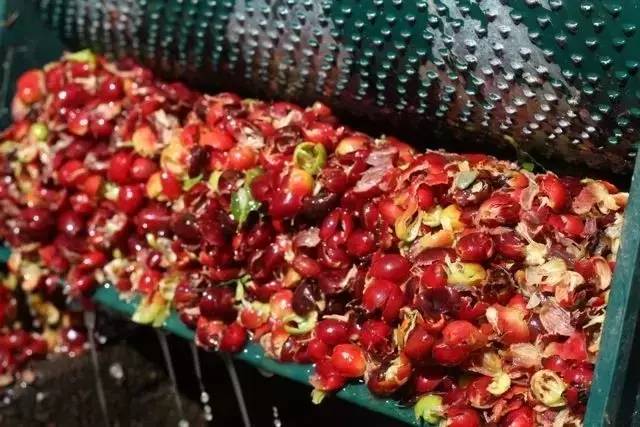
sun
Solarization is the most primitive treatment. When the fruit is ripe and picked, the worker will directly spread it on the sun field or sun bed to dry it without washing. In order to avoid uneven drying and fermentation during the natural drying process, it will be stirred in due time. When it is dried to a certain moisture content, the coffee fruit will turn from bright red to black. At this time, the skin and pulp will become hard and easy to peel off. At this time, the coffee beans will enter the shelling machine to remove the pulp.
Therefore, the difference between the solarization method and the washing method is that the solarization method is dried and then the pulp is removed, and the washing method is removed and then dried.
Finally, solarization is usually more mellow than washing because it does not involve water, but its disadvantage is that it is easy to mix in defective beans and is not as delicate as washing.
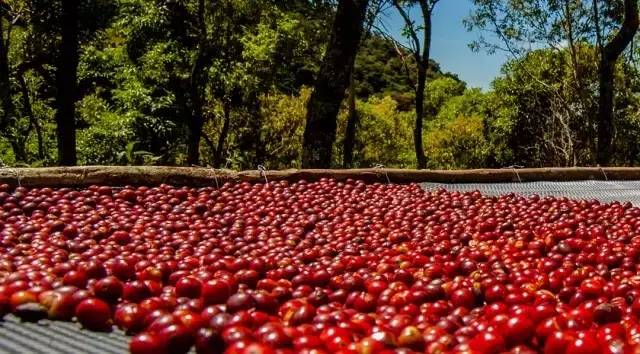
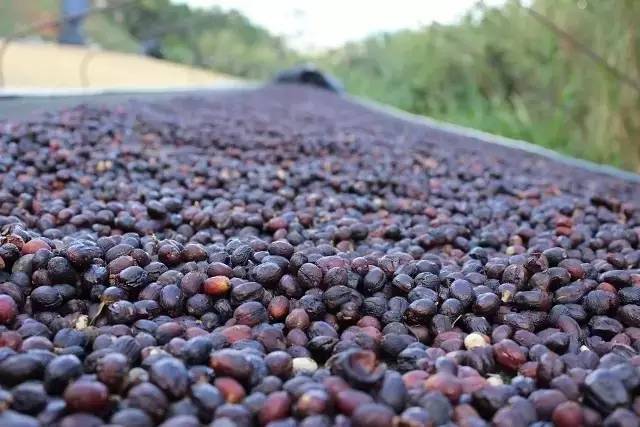
Pay attention to coffee reviews (Weixin Official Accounts vdailycom ) and find a beautiful cafe to open your own shop
honey treatment
In addition to sun and water washing, there is a compromise treatment is honey treatment, between water washing and sun treatment.
The honey treatment method originated in Costa Rica and was tried by fruit growers to improve the quality of coffee beans. The honey treatment was not called honey treatment because honey was added or the treated beans were sweeter, but in the process of drying, the water in the endocarp on the surface of the fruit core evaporated and became as thick as honey, hence the name.
This layer of endocarp is the core of the whole honey treatment, because the endocarp is rich in sugar and sour, in the drying process, sweet and sour will penetrate into the coffee beans, honey treatment coffee at the same time has the purity and acidity of washed coffee, as well as the heavy taste, complex taste and high sweetness of sun-cured coffee.
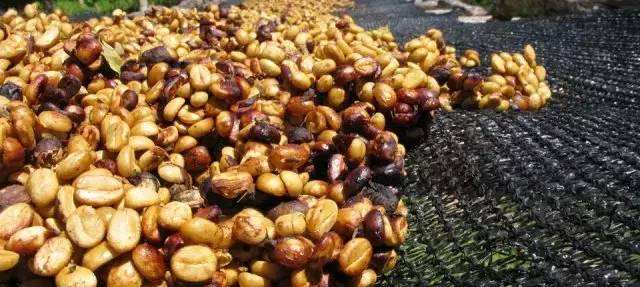
Important Notice :
前街咖啡 FrontStreet Coffee has moved to new addredd:
FrontStreet Coffee Address: 315,Donghua East Road,GuangZhou
Tel:020 38364473
- Prev
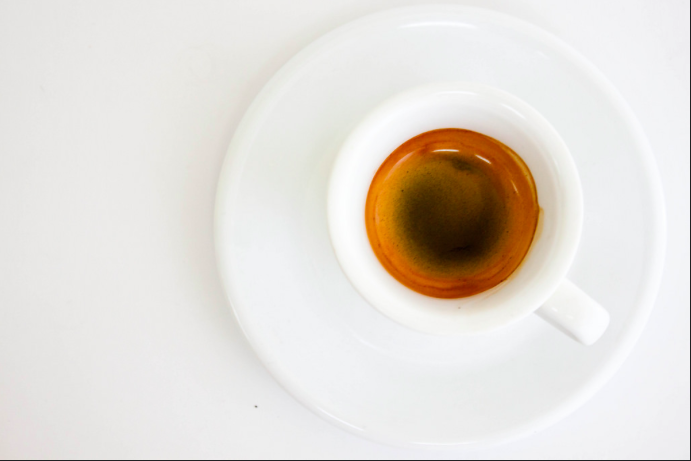
What is S.O.E? How should Single Origin play?
Single Origin (S.O) is very popular now. When you go to boutique cafes, there are often S.O.Espresso or S.O cappuccino on menu. So, what exactly does Single Origin mean? What's so special about it? How on earth should I play? Today, let's have a good understanding of the meaning of ~ 1 Single Origin. The Chinese translation of Single Origin
- Next
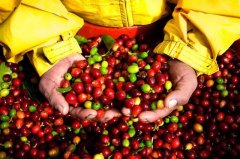
What will coffee beans taste like when they pass through the oak barrel?
The spices we smell in wine, such as toast, wood, coffee, chocolate and even licorice and cinnamon, are all from oak barrels. Therefore, oak barrels play an indispensable role in the blessing of wine flavor. It is for this reason that many coffee manufacturers use oak barrels in the process of roasting coffee beans in order to extract more oak barrel flavor.
Related
- Beginners will see the "Coffee pull flower" guide!
- What is the difference between ice blog purified milk and ordinary milk coffee?
- Why is the Philippines the largest producer of crops in Liberia?
- For coffee extraction, should the fine powder be retained?
- How does extracted espresso fill pressed powder? How much strength does it take to press the powder?
- How to make jasmine cold extract coffee? Is the jasmine + latte good?
- Will this little toy really make the coffee taste better? How does Lily Drip affect coffee extraction?
- Will the action of slapping the filter cup also affect coffee extraction?
- What's the difference between powder-to-water ratio and powder-to-liquid ratio?
- What is the Ethiopian local species? What does it have to do with Heirloom native species?

